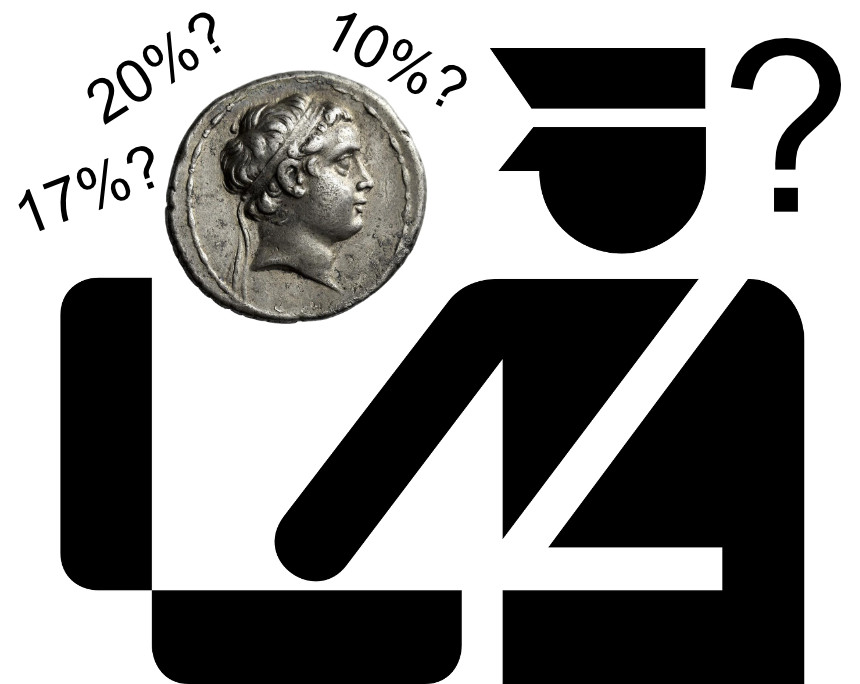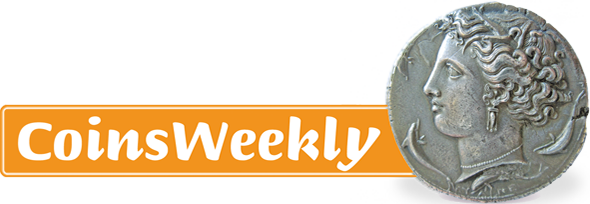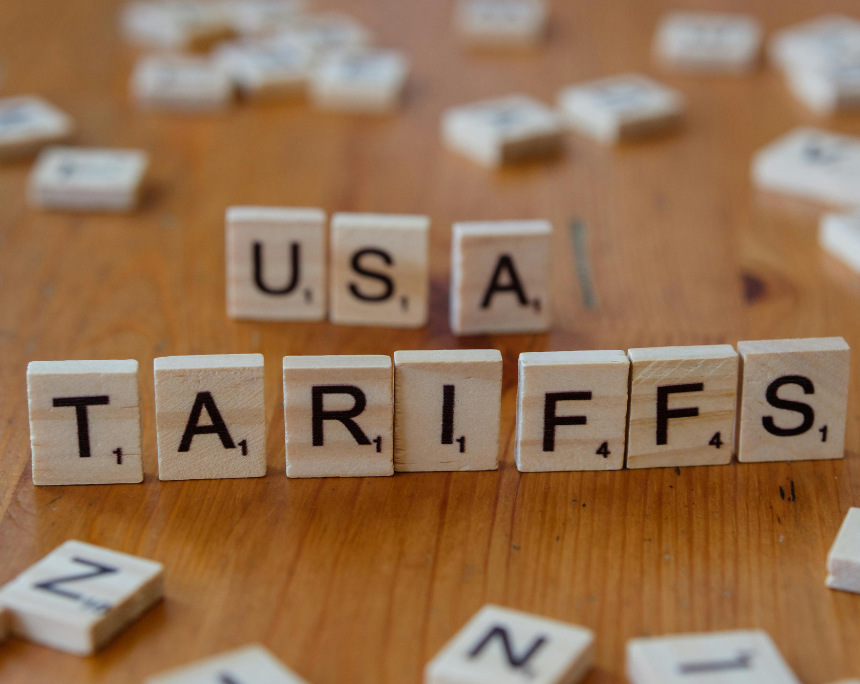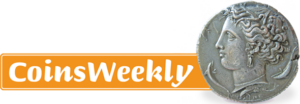Will the International Coin Market Be Affected by the New US Tariff Policy?
by Ursula Kampmann, translated by Maike Meßmann
America’s tariff regime is dominating the headlines. Yesterday morning (CET), when Ursula Kampmann wrote this article, many countries were under the threat of high punitive tariffs. As of yesterday evening (CET), this is no longer the case. But it is still interesting to consider what would happen in the coin market if punitive tariffs were imposed.
Content
CoinsWeekly asked three major coin dealers’ associations – in the US, Switzerland and Germany – the following questions:
- What tariffs should US customers expect when buying from or consigning to German or Swiss auction houses?
- What tariffs should European and Asian customers expect when buying from an American auction house?
- What tariffs should European and Asian customers expect when consigning to an American auction house?
- Is there any information yet on how the punitive tariffs will be processed?
- How will these punitive tariffs be executed with regard to American auction houses with European or Asian branches?
The answers reflect the current uncertainty and are mostly limited to “We don’t know”. Or as John Feigenbaum, Executive Director of the Professional Numismatic Guild, puts it much more eloquently: “Unfortunately, we are in the same situation as you on this matter, and the PNG is not comfortable giving official answers to tariff questions. The matter is still very fluid so any official statement would also run the risk of being nullified by the next news cycle.”
Which Players in the Coin Market Are Currently Affected by the New Tariff Policy?
Let’s be very clear: any coin imported into the US is already subject to the new tariffs. The only exception seems to be bullion, as the National Coin & Bullion Association (NCBA) announced. However, the definition of ‘bullion’ is not crystal clear. Does the exception only apply to gold specimens? Or also to other materials such as silver, platinum or palladium? What about contemporary coins that are sold far above their material value? The NCBA is currently discussing the matter with the authorities.
The exception does not apply to classical numismatics. Older coins and medals are subject to punitive tariffs. According to the latest newsletter of the Classical Numismatic Group, the height of the respective tariff is apparently not based on the country in which the coin is sold, but on the country in which it was produced. This means that US customers buying a Chinese coin in Germany can expect that the high punitive tariffs on Chinese goods will apply. Anyone buying ancient Greek coins in London will be subject to the EU tariff, at least as long as the coin was struck in a mint in what is now Italy or Greece; if the coin is from Asia Minor, the Turkish tariff applies. It will be wonderful to see the utter confusion of customs officials. Just think of the tetradrachms issued after Alexander the Great, or Roman coins from Caesarea Cappadocia in Turkey.

The height of the applied tariff will apparently be based on the country where the coin was struck – so, you can look forward to some lively discussions about ancient mints with your customs officer!
But this issue also raises interesting questions regarding contemporary numismatics: What about the commemorative coins produced in Munich by a Liechtenstein company, which are very popular in the USA, which bear a denomination of Mongolia, the Cook Islands or Niue? Any customs official will pray that these coins will be declared bullion and duty-free.
A crucial detail is that coins consigned by US citizens to foreign auction houses are also subject to tariffs when they are re-imported. We are currently seeing the first effects of this in Zurich, where the Nomos auction house, which does a lot of business with the United States, had to postpone its Auction 35. Several US collections of ancient coins were supposed to be offered in this sale. As these coins are already in Zurich, the current legal situation implies that custom duties will have to be paid upon re-importation.
What Impact Could the New US Tariff Policy Have on the Coin Market?
For the time being, nothing changes for European and Asian collectors. They will continue to pay the tariff that applies to their country.
Coins that are not currently in the US will become more expensive for American collectors as a result of the new tariffs. This will have little impact on the trade in US coinage, which accounts for the majority of the US coin trade. But it will affect collectors of world coins and ancient issues. They are likely to see prices rise dramatically. This is because the (artificial) shortage of world and ancient coins within the US, more US collectors will concentrate on the small number of specimens currently in the US.
Entrepôt: A Solution for Investors
Small collectors are at a disadvantage. Investors, on the other hand, can afford the luxury of buying all the coins they find interesting and storing them duty-free in an entrepôt until they are resold.
Attractive Conditions for Foreign Auction Houses to Acquire Consignments
Today, the success of a numismatic auction house is not determined by how good it is at selling a collection, but by how good it is at acquiring the right collection. For this very reason, US auction houses have set up branches in Europe and Asia. Collectors are drawn to them because they provide access to the US market where investment goods usually achieve higher prices.
These American companies are now being penalised by punitive tariffs. Their business model becomes obsolete. If they buy items abroad, they face high additional costs when selling the pieces in the US. At the same time, European and Asian auction houses can continue to receive consignments without any problems and import them into their home countries under the usual conditions.
Will US auction houses now set up actual subsidiaries that hold auctions themselves? That remains to be seen. Some of them might have no choice.
The End of the Internationality of US Coin Shows?
What will happen to the internationality of the major US coin shows? For example, 30% of the 100 or so exhibitors at the New York International Numismatic Convention come from abroad. Those who come there to sell may no longer do so in the future. And buyers could also disappear over time if prices for scarce ancient and world coins in the US actually rise. This would be the end of the global importance of US coin shows.
Coins of Exquisite Quality Could Become Cheaper in Europe
A final consequence of the new tariff policy could be a change in prices in Europe. The grading fetishism of US grading companies has not yet taken root in Europe as it has in the US. If US investors pay 20% more for foreign coins, they will buy less abroad. And since they have made up a particularly high proportion of bidders for high-calibre pieces, this lack of competition will have a noticeable impact. This means that coins of exquisite quality in Europe could become a little cheaper again.
Wait and See What the Next Round Will Bring
All this is nothing but gazing into a crystal ball, and these considerations might soon be out of date. Nobody knows what the White House and its negotiating partners have in mind right now. As Press Secretary Leavitt recently said: “Boys will be boys” – they like to try new things and then do something completely different. Or, as a very populist Bavarian politician once put it: Why would I care about water under the bridge?
Let’s hope that the internationality of the coin market does not fall victim to a trade war that is just beginning.
Time of going to press: 9 April 2025








